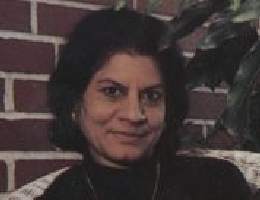Funeral Prayer
Prayers recommended during impending death. Recite the Soorah Yaa-seen near a dying person as he breathes his last peacefully on hearing Sa-laa-moon-qao-lum-mir-rub-bir-ra-heem [Peace- Dreetings from God, the Most Merciful – 036:059]. Those nearby should frequently recite Ka-le-ma-toy-yay-bah and Sha-haa-dah [I testify that there is no God except Allah. And I testify that Mohammad was His man and His Messenger].
Prayers after Death. Recite Inna-lil-laa-he-raa-je-oon [We all belong to Allah and to Him we shall return – 002:157]. The same should be repeated on hearing the news of someone’ death.
Early steps. After the deceased has passed away, close his eyes and tie the head so that the mouth is shut. There should be no screaming or crying, but with composure and courage all those nearby should join in the making of burial arrangement by starting with the Last Bath.
Last bath should be given by a male to a male and female to a female. It is permissible for a widow to bathe her husband’s body and a widower to bathe his wife’s body. Use fresh or warm water, adding berry leaves if available. First wash the hands, face and arms till elbows as in a wodzoo. No need to give a mouth rinse or put water in nostrils or wash feet. Then wash the body, first the right side and then the left. The area of private parts should remain covered.
Ka-fun should be put on after the bath, using the cheapest sheets in white. Men are covered in three sheets – one covering the upper body, one covering the lower body, and the third called ‘envelope’ covering the whole body. Women are covered with two additional pieces – one as a brassier and the other as a head gear. Viewing the face after the bath and Ka-fun is permissible.
Funeral prayer is held soon after. Attendees carry the body on their shoulders to place it in front of an Imaam who leads the prayer. The prayer is offered while standing. Attendees form odd number of rows behind him who stands ahead and close to the center of the first row.
- The Imaam starts the prayer with the first aloud Alla-ho-Akbur. All recite silently the Tha-naa and Soorah Faa-te-hah.
- After a second Alla-ho-Akbur and without raising hands, all silently recite the Da-rood.
- After a third Alla-ho-Akbur and no hands raised, all silently recite designated prayers.
- Soon after the fourth Alla-ho-Akbur the Imaam ends the prayer by turning to his right and saying Us-Slaam-O-Alai-koom-wa-Rah-ma-tool-laah [Peace and blessing of Allah be on you all] and then turning left and repeating the same greetings.
Burial. The body is carried on the shoulders to the burial-site where the deceased is buried and farewell — with prayers being hymned for the forgiveness of his personal human shortcomings and for the perpetuation of his virtues and good deeds by his surviving family members.
(For more details in Urdu language, visit → www.Alislam.org → ‘Fiqah’ pp 238-266. Or in Arabic language → “Ibnay Maajah, Chapters “What to say near sick person and Funerals”


Funeral Prayer
Funeral Prayer
Prayers recommended during impending death. Recite the Soorah Yaa-seen near a dying person as he breathes his last peacefully on hearing Sa-laa-moon-qao-lum-mir-rub-bir-ra-heem [Peace- Dreetings from God, the Most Merciful – 036:059]. Those nearby should frequently recite Ka-le-ma-toy-yay-bah and Sha-haa-dah [I testify that there is no God except Allah. And I testify that Mohammad was His man and His Messenger].
Prayers after Death. Recite Inna-lil-laa-he-raa-je-oon [We all belong to Allah and to Him we shall return – 002:157]. The same should be repeated on hearing the news of someone’ death.
Early steps. After the deceased has passed away, close his eyes and tie the head so that the mouth is shut. There should be no screaming or crying, but with composure and courage all those nearby should join in the making of burial arrangement by starting with the Last Bath.
Last bath should be given by a male to a male and female to a female. It is permissible for a widow to bathe her husband’s body and a widower to bathe his wife’s body. Use fresh or warm water, adding berry leaves if available. First wash the hands, face and arms till elbows as in a wodzoo. No need to give a mouth rinse or put water in nostrils or wash feet. Then wash the body, first the right side and then the left. The area of private parts should remain covered.
Ka-fun should be put on after the bath, using the cheapest sheets in white. Men are covered in three sheets – one covering the upper body, one covering the lower body, and the third called ‘envelope’ covering the whole body. Women are covered with two additional pieces – one as a brassier and the other as a head gear. Viewing the face after the bath and Ka-fun is permissible.
Funeral prayer is held soon after. Attendees carry the body on their shoulders to place it in front of an Imaam who leads the prayer. The prayer is offered while standing. Attendees form odd number of rows behind him who stands ahead and close to the center of the first row.
Burial. The body is carried on the shoulders to the burial-site where the deceased is buried and farewell — with prayers being hymned for the forgiveness of his personal human shortcomings and for the perpetuation of his virtues and good deeds by his surviving family members.
(For more details in Urdu language, visit → www.Alislam.org → ‘Fiqah’ pp 238-266. Or in Arabic language → “Ibnay Maajah, Chapters “What to say near sick person and Funerals”
Related Posts
None